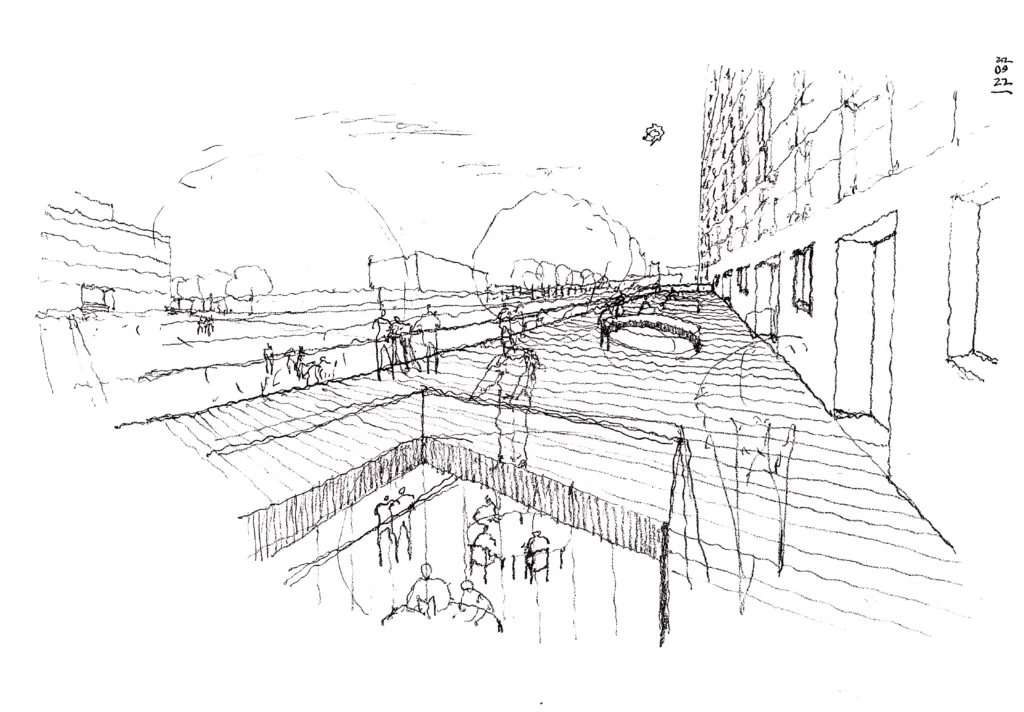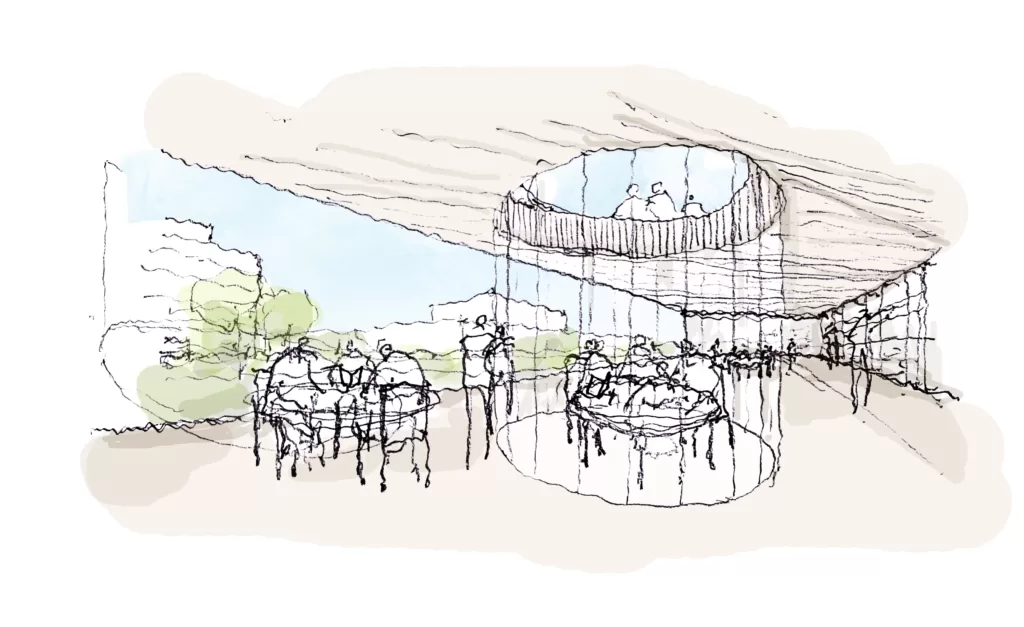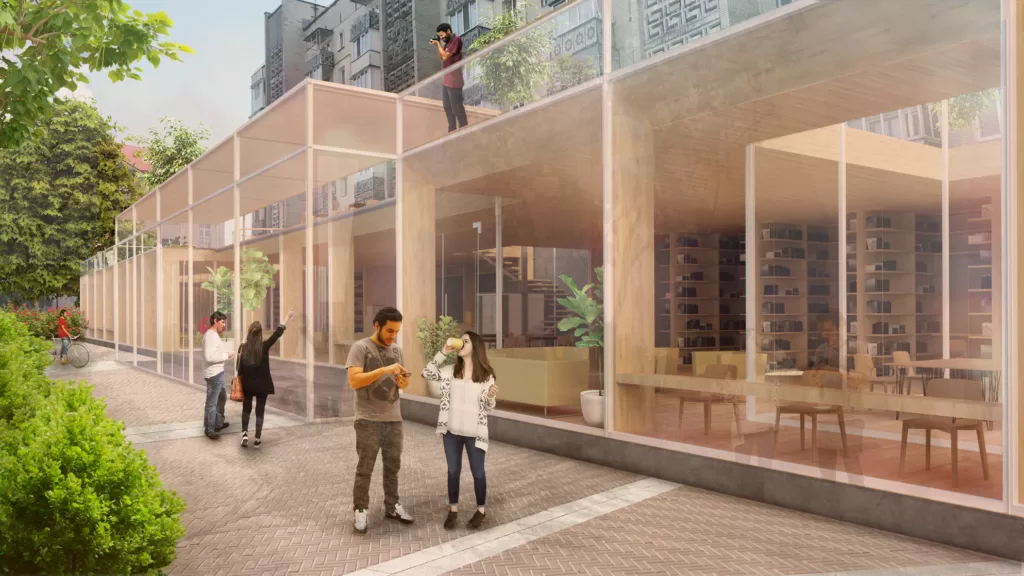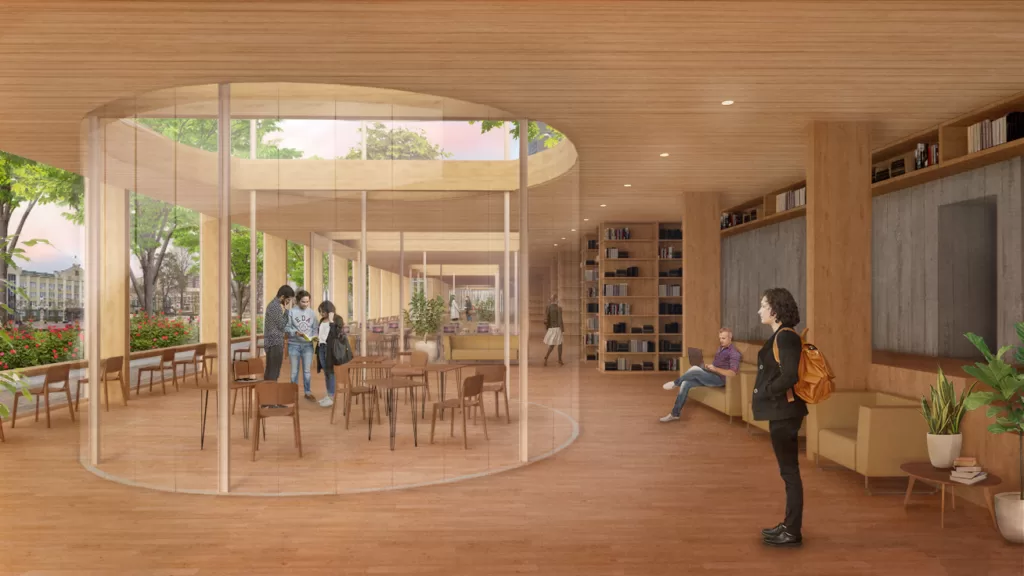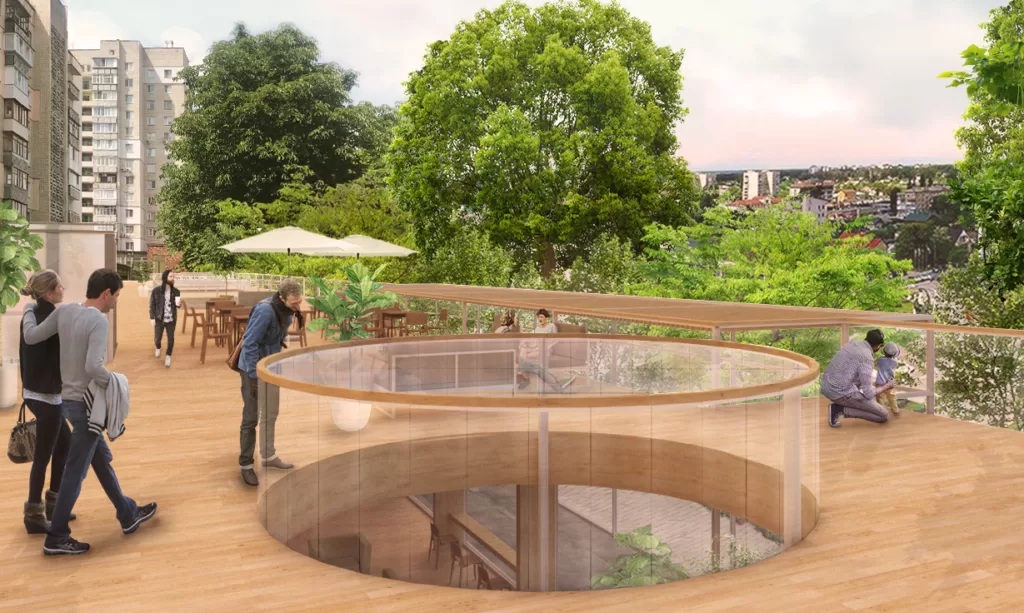The commission from the Irpin authorities was very clear: this new Public Library must be an artistic, modern, conceptual, and sensitive work that allows the construction of an innovative, creative space that embodies the liberation of the old concepts inherited from the Soviet era, collecting and valuing relevant aspects of the Irpin community and landscape.
Basic diagnosis for the development of the project.
This plinth volume is built on a single level and is structured with a sequential system of interior walls that compartmentalize its spaces and programs, constituting a segmented and discontinuous space, which, due to its over-structuring, prevents the entry of light. natural and the conception of the library program and its different areas, as a continuous and compact unitary space, complicating the development of the experience of library and teaching use.
Its main façade attempts to build a forced neoclassical style, full of cladding and eclectic decorative details, without achieving a spatial and urban dialogue with the scale and significance of the Civic Square and the Municipal Building it faces.
Inside, it is an overstructured, labyrinthine, twisted space in terms of natural light, hyper compartmentalized, designed with a logic that prevents the free meeting and interaction of people inside, a true space of control and social supervision, faithful representative of the Soviet era.
Architecture proposal.
The library as a habitable glass box.
A first design image is constituted by the conception of the library as a habitable glass box, open, transparent, full of light, which contains, cares for, protects and presents, as a gift to the city, its most precious jewels and treasures: the books.
A second design image is configured through the conception of the library as a new space of freedom in the city, based on the meeting and architectural fusion between the perception and experience of simultaneously inhabiting the interior space. and exterior, blurring its perceptual limits through the dematerialization of the wall filled with transparent glass planes.
The library as a new space of freedom, fluency and spatial interconnection.
Taking all the above into account, the project develops an architectural reformulation to transform this Soviet space into a new space, full of natural light, freedom, and spatial and programmatic continuity, which encourages the free meeting of the people who will inhabit it.
Like the volume of the plinth, it is of a single level, set on the lower edge of the high-rise apartment building, and projecting outside its structural limits, it provides the possibility of stripping it of all that forced neoclassical over-structuring, to free up its interior space, to generate great spatial and visual continuity.
For such purposes, using large longitudinal planes of continuous glass, the project builds a glass box that, as a new transparent perimeter, allows the boundaries between the interior and exterior of the library to be blurred, and to produce the entrance of the public space of the Civic Square, its ornamental trees, and the main facade of the Municipal Building, building a new experience of spatial and programmatic freedom inside.
Being in the library, we will have the protected and silent feeling of reading a book in the Civic Square without really being.
In this way, the structural independence of this plinth from the larger building will allow us to build a habitable roof, transforming that old dirty and undervalued roof into a habitable terrace accessible from the new library, forming a new public space, which will move part of the existing cafeteria to that level, where all this new space, from another height that has been gained by the project, will be able to integrate and enjoy the wide civic space of the Civic Plaza, from a new urban experience in a protected way: the construction of an urban balcony to enjoy this great public space.
Both spatiality, the dimension of the exterior urban terrace and balcony with the fluid, continuous and transparent space inside the space of the new library, are connected through large zenithal openings, generated by transparent interior glazed volumes that allow, without to interrupt the fluidity and spatial continuity of the interior of the library, to build true islands of study and specific concentration.
All the above is allowed, facilitated, and enhanced through a structural system of laminated wood beams and pillars that, first, through a stainless-steel spider anchoring system, independently support the planes. transparent glazed windows that make up the perimeter of the new library.
Secondly, through the construction of a longitudinal structural strip of bookcases, also made of wood, they support the entire structural system of the laminated wood beams that support the covered ceiling structure that constitutes the upper urban terrace and balcony.
Finally, in the third place, this same longitudinal structural strip of bookcases, which runs from end to end the entire length of the interior space of the new library, allows the generation of a thickness built by the books they contain which, as a transitional space , separate the free and fluid space of the new library, from the old service area and warehouses, contained in the old structural system of the existing apartment building, radically marking its conceptual and architectural difference.
